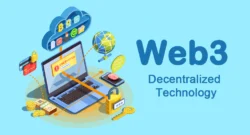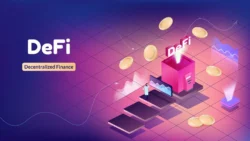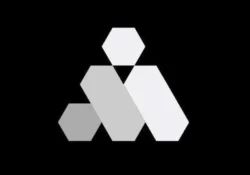Smart contracts are the foundation of Web3, powering a decentralized internet where users control their data, assets, and interactions without intermediaries. These self-executing programs, stored on blockchain networks, automate agreements with unmatched transparency and security, transforming industries from finance to gaming. As of July 2025, the global smart contracts market has surged to $3.21 billion, growing by 22% year-over-year, driven by innovations like layer-2 scaling solutions and enhanced security tools. This article explores the mechanics, applications, recent advancements, challenges, and future potential of smart contracts, providing a comprehensive guide for beginners and enthusiasts alike.
First conceptualized by Nick Szabo in 1994, smart contracts have evolved from a theoretical idea to a practical reality, thanks to platforms like Ethereum. By enabling trustless, automated transactions, they eliminate the need for intermediaries like banks or lawyers, reducing costs and enhancing efficiency. In 2025, advancements such as Fuel’s layer-2 solutions and formal verification tools have made smart contracts faster, cheaper, and more secure, cementing their role in decentralized finance (DeFi), non-fungible tokens (NFTs), and beyond. However, their complexity and security risks highlight the need for careful development and user education.
What Are Smart Contracts?
Smart contracts are computer programs stored on a blockchain that automatically execute actions based on predefined conditions. Unlike traditional contracts, which rely on intermediaries, smart contracts operate autonomously on decentralized networks, ensuring transparency and immutability. They follow an “if/when…then…” logic, such as releasing funds when a condition (e.g., payment received) is met, with all actions recorded on the blockchain.
Nick Szabo likened smart contracts to vending machines: specific inputs guarantee predetermined outputs. Ethereum’s 2015 launch, with its Turing-complete Solidity language, made complex smart contracts feasible, enabling applications like DeFi and NFTs. Today, smart contracts are integral to Web3, supporting decentralized applications (dApps) across multiple blockchains, including Solana, Cardano, and Polygon.
How Smart Contracts Work
Smart contracts operate on blockchain platforms, with Ethereum being the most prominent. Here’s the process:
- Development: Written in languages like Solidity or Vyper, smart contracts define rules and conditions (e.g., “transfer 1 ETH if a product is delivered”).
- Deployment: The contract is compiled into bytecode and deployed to the blockchain via a transaction, receiving a unique address.
- Execution: Users or other contracts trigger the contract by sending transactions, which execute automatically when conditions are met.
- State Management: Contracts maintain a persistent state (e.g., account balances) on the blockchain, updating with each transaction.
- Events and Logs: Contracts emit events to log actions, creating a transparent record.
- Security: Blockchain consensus (e.g., proof-of-stake) ensures tamper-proof execution.
For example, a crowdfunding smart contract might hold funds until a goal is reached, releasing them to the project or refunding backers if it fails.
Role in Web3 Applications
Smart contracts are the engine of Web3, enabling decentralized, trustless systems. Key applications include:
1. Decentralized Finance (DeFi)
DeFi platforms like Aave, Compound, and Uniswap use smart contracts to automate financial services:
- Lending/Borrowing: Contracts manage loans, interest rates, and collateral without banks.
- Decentralized Exchanges: Uniswap’s contracts facilitate token swaps via liquidity pools.
- Yield Farming: Contracts distribute rewards to liquidity providers.
2. Non-Fungible Tokens (NFTs)
NFTs rely on smart contracts for:
- Minting: Creating unique digital assets on platforms like OpenSea.
- Ownership: Tracking and transferring NFT ownership securely.
- Royalties: Automating creator payouts on secondary sales.
3. Decentralized Autonomous Organizations (DAOs)
DAOs like MakerDAO use smart contracts for:
- Governance: Automating voting on protocol changes.
- Treasury Management: Managing funds based on community decisions.
4. Supply Chain
Smart contracts enhance transparency by:
- Tracking Provenance: Recording product origins and movements.
- Automating Payments: Triggering payments upon delivery.
5. Gaming
Games like Axie Infinity use smart contracts for:
- Asset Ownership: Players own in-game items as NFTs.
- Economies: Managing trading and breeding of digital assets.
6. Other Sectors
- Real Estate: Automating property transfers and fractional ownership.
- Healthcare: Securing patient data and streamlining insurance claims.
- Voting: Ensuring transparent, tamper-proof elections.
Recent Developments in 2025
As of July 9, 2025, smart contracts have seen significant advancements:
- Market Growth: The smart contracts market reached $3.21 billion, up 22% from 2024, per The Business Research Company, driven by DeFi, NFTs, and supply chain applications.
- Layer-2 Scaling: Solutions like Fuel reduce Ethereum’s transaction costs and latency, making smart contracts more accessible for high-volume use cases.
- Security Improvements: Tools like Hardhat, Truffle, and formal verification languages (e.g., Michelson, Scilla) minimize vulnerabilities, addressing past issues like the 2016 DAO hack ($50 million loss).
- Legal Progress: States like Arizona, Iowa, and Nevada recognize smart contracts as legally binding, with the UK’s 2021 Digital Dispute Resolution Rules supporting enforceability.
- Interoperability: Polkadot and Cosmos enable cross-chain smart contract interactions, enhancing Web3 connectivity.
- Development Tools: Solidity, Vyper, and Cairo, alongside IDEs like Remix, streamline development, with Fuel’s modular blockchain optimizing execution.
- Top Applications: Platforms like Decentraland (virtual worlds), Brave (privacy-focused browsing), and Everledger (supply chain tracking) showcase smart contract versatility.
Challenges and Limitations
Smart contracts face several hurdles:
- Complexity: Writing secure contracts requires expertise, as errors can lead to significant losses (e.g., Parity wallet hacks).
- Scalability: High gas fees and slow transactions on some blockchains hinder adoption, though layer-2 solutions help.
- Regulatory Uncertainty: Despite progress, global legal frameworks vary, complicating adoption.
- User Experience: Non-technical users struggle with wallet interactions and gas fees, requiring better interfaces.
- Security Risks: Bugs or exploits can compromise contracts, necessitating rigorous auditing.
| Challenge | Description | Mitigation |
|---|---|---|
| Complexity | Coding errors can lead to financial losses. | Use auditing tools and formal verification. |
| Scalability | High fees and slow transactions limit usability. | Leverage layer-2 solutions like Fuel. |
| Regulatory Uncertainty | Inconsistent global regulations create uncertainty. | Monitor and comply with local laws. |
| User Experience | Technical barriers deter mainstream adoption. | Develop intuitive wallets and interfaces. |
| Security Risks | Exploits can compromise contracts. | Employ rigorous testing and audits. |
Future Outlook
By 2026 and beyond, smart contracts are expected to:
- Expand Adoption: Penetrate healthcare, real estate, and governance with automated, transparent solutions.
- Enhance Functionality: Integrate real-world data via oracles for complex applications.
- Improve Security: AI-driven auditing and formal verification will reduce risks.
- Streamline UX: User-friendly interfaces will drive mainstream adoption, embedding smart contracts in everyday apps.
Conclusion
Smart contracts are the backbone of Web3, enabling automated, trustless, and transparent interactions across decentralized applications. As of July 2025, their market growth to $3.21 billion, coupled with advancements like Fuel’s scalability and enhanced security tools, underscores their transformative potential. While challenges like complexity and user experience persist, ongoing innovations are making smart contracts more accessible and secure. For developers, businesses, and users, understanding smart contracts is key to engaging with the decentralized future of the internet.







